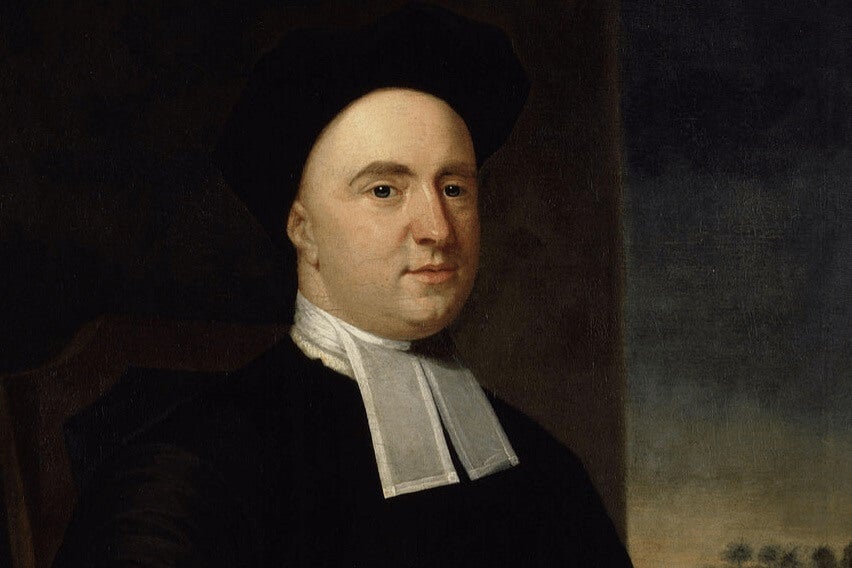Discover the biography of George Berkeley (1685–1753), one of the most important scientists of his time, bishop, philosopher and humanist. He is well known for his empirical philosophy and his defense of idealism; He was also a fierce critic of the greatest philosophers who preceded him, such as Descartes and Locke.
Idealism tells us that everything exists to the extent that it can be perceived with our senses, except the spiritual, its contributions range from philosophy to physics, to fields such as psychology, medicine and mathematics. A great thinker, with a vast and influential work worth being known and that today, somehow, we will try to save in this article.
- George Berkeley was born in Dysert.
- Ireland.
- In 1685 and died in Cloyne.
- Ireland.
- In 1753.
- He was a talented student at Trinity College Dublin and studied science and literature.
- In addition.
- He remained at this university as a professor until his studies in Greek and Hebrew were perfected.
Always in touch with the work of great thinkers, such as Locke, Hobbes, Descartes and Newton, he develops his own reflection: intangible or idealistic philosophy. Between 1707 and 1710 he published several books of great importance, including the Treaty on the Principles of Human Knowledge in 1710 he was ordained an Anglican priest.
George Berkeley married Anne Foster, a highly trained intellectual wife who defended her husband’s philosophy until the last days, in 1728. Between 1728 and 1731 he settled in the American colonies, specifically Rhode Island, where he expected funding from the king to create a missionary center to educate the inhabitants.
However, having not obtained this funding, he decided to return to Europe, settling in London in 1732 and later in Cloyne, from there until 1744 he developed important works such as Alciphron, The Theory of Vision and Siris. On the death of one of his sons, Berkeley died in 1753, leaving a great scientific and philosophical legacy.
Unlike Locke and Hobbes, Berkeley embraced philosophical immaterialism, but what exactly is this immaterialism?For Berkeley, we know things only because of their relationship with our senses, not for what they are in themselves; in other words, we only accept our mental representations as true.
Berkeley proposed the principle of idealism, explaining that “the being of things” means “to be perceived. “In fact, the substance would not be matter, but its spiritual substrate. According to Descartes, the spiritual is the fruit of our thoughts, and that would be his irrefutable test, his criterion of truth.
Descartes rejects the world of the senses. For him, the senses deceive us and therefore we must not trust them. Knowledge, for Descartes, is innate and it is the reason that will guide us to him. of his own existence: cogito ergo sum. He is an imperfect being and yet he has the idea of a perfect being: God. An imperfect being cannot have created something perfect. So who put the idea in your mind?The answer to this question can be nothing but God Himself.
The other side of the coin is represented by Berkeley, whose empiricism is extreme to say the least. We no longer speak of knowing through the object, but rather that the object is when it is perceived; However, if objects exist only as a result of In our mental representations, there must be something that remains outside our minds and feeds our perceptions. That outside of us is nothing but God.
In this way, Berkeley and Descartes, although extremely opposed, function as two sides of the same coin. Two very different theories about knowledge and metaphysics, but they have the same answer: God.
One of the things that sets Berkeley apart is his understanding of how we perceive and interact with objects. His main idea is that our knowledge is only real if there is conformity between our ideas, not the reality of things. : “Having an idea is the same as perceiving”.
According to this paradigm, nothing we perceive in nature exists in nature, so existing can mean nothing but perceive and be perceived, a phenomenon that can be seen in children when they play hide-and-seek, closing their eyes to become invisible.
According to Berkeley, we don’t see things from the environment around us, we actually have ideas, and inside, we see things, as a result of the perception of objects with vision it is concluded that they do not exist outside our minds. It is a completely revolutionary approach, which opens the door to relativism, each person sees and creates their own reality according to their own cognitions.
In George Berkeley’s biography, we see that his work poses two main problems:
While Berkeley tries to reduce any experience to an internal experience, resulting in ideas being in mind and deduced from sensations, it was a proposal that had a great weight on philosophy and psychology during the 19th and 20th centuries.
Rejecting the thesis of important thinkers who preceded him, George Berkeley proposes that our mind be composed of an infinite set of ideas, which arise from our experience with different sensations, so we do not operate with the objects themselves, but with our mental representations. of those objects.
So, for Berkeley, everything that doesn’t exist in our minds doesn’t exist in our universe. This sentence holds a deep resemblance to what Wittgenstein would say a century later: “The limits of my language are the limits of my world. “
As for its impact on psychology, approaches such as structuralism and cognitive psychology have at least some of their background in Berkeley ideas.
In short, when we know George Berkeley’s biography, we see that he was a scientist and a thinker who helped us unravel the mysteries of the mind a little more.

